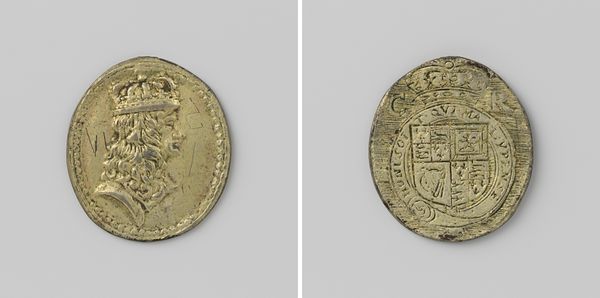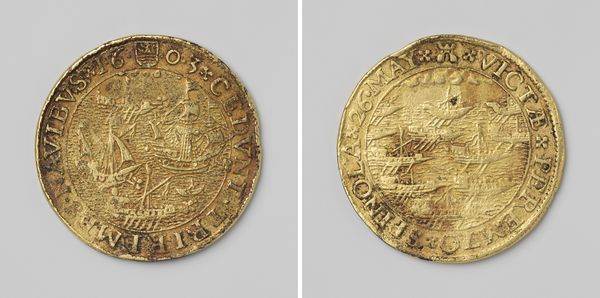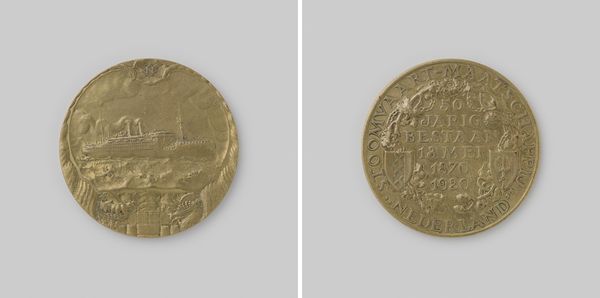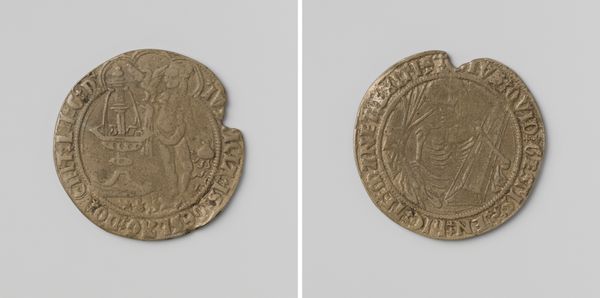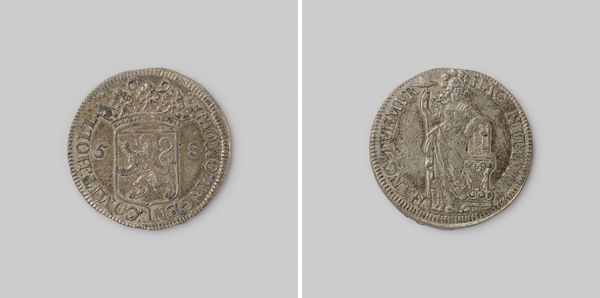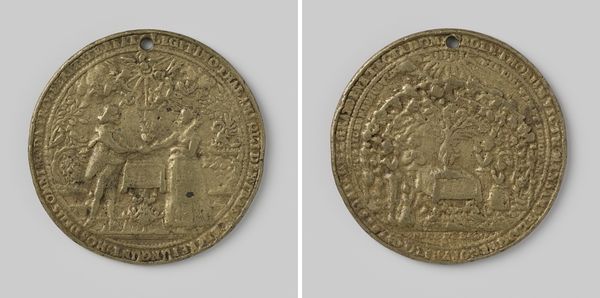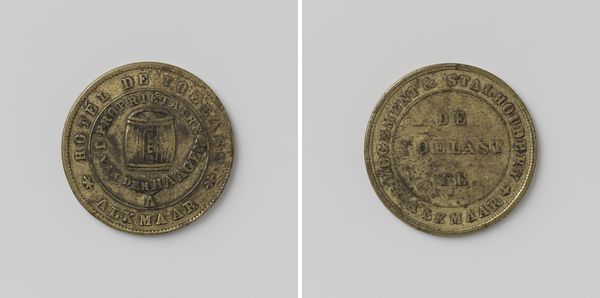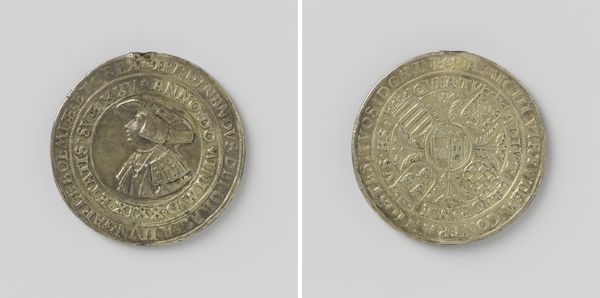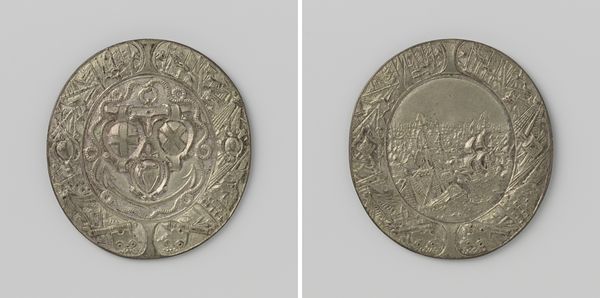
carving, print, metal, relief
#
portrait
#
carving
# print
#
metal
#
relief
#
history-painting
#
italian-renaissance
#
monochrome
Dimensions: diameter 2.5 cm, weight 34 gr
Copyright: Rijks Museum: Open Domain
Editor: Here we have a metal carving, “Jubeljaar afgekondigd door paus Julius III,” dating back to 1550 by Alessandro Cesati. The craftsmanship is remarkable; even at this small scale, there is incredible detail! What catches your eye about this piece? Curator: It's fascinating how a small object like this carries so much weight. We see symbols meant to resonate with audiences far beyond its immediate purpose. Look at the imagery employed: the papal coat of arms, for example. What emotions and ideals do you think these symbols were designed to evoke in the contemporary viewer? Editor: Authority, definitely! I guess a sense of timeless power. And that doorway-like shape with the letters - what’s the significance of that? Curator: Ah, there is much encoded there. The portal symbolizes entry into a period of grace, of spiritual renewal offered by the papacy. "AN. IVB. DAI. MDL" refers to the year of the Jubilee: 1550, marking the Holy Year when indulgences were granted to those who made a pilgrimage to Rome. The choice of imagery and language attempts to bridge temporal and spiritual power, using classical motifs and Latin abbreviations to promote both faith and obedience to the Church. Does knowing this symbolism change your interpretation? Editor: It really does! It feels less like a simple announcement and more like a carefully constructed piece of propaganda, almost like a little promise. I would have missed all of this without you pointing it out. Curator: Exactly. And it highlights how objects, even seemingly insignificant ones, can be powerful conveyors of meaning when you learn to interpret the symbols they present. Editor: I will never look at coins the same way. There’s more there than just monetary value, it’s encoded cultural history.
Comments
No comments
Be the first to comment and join the conversation on the ultimate creative platform.
